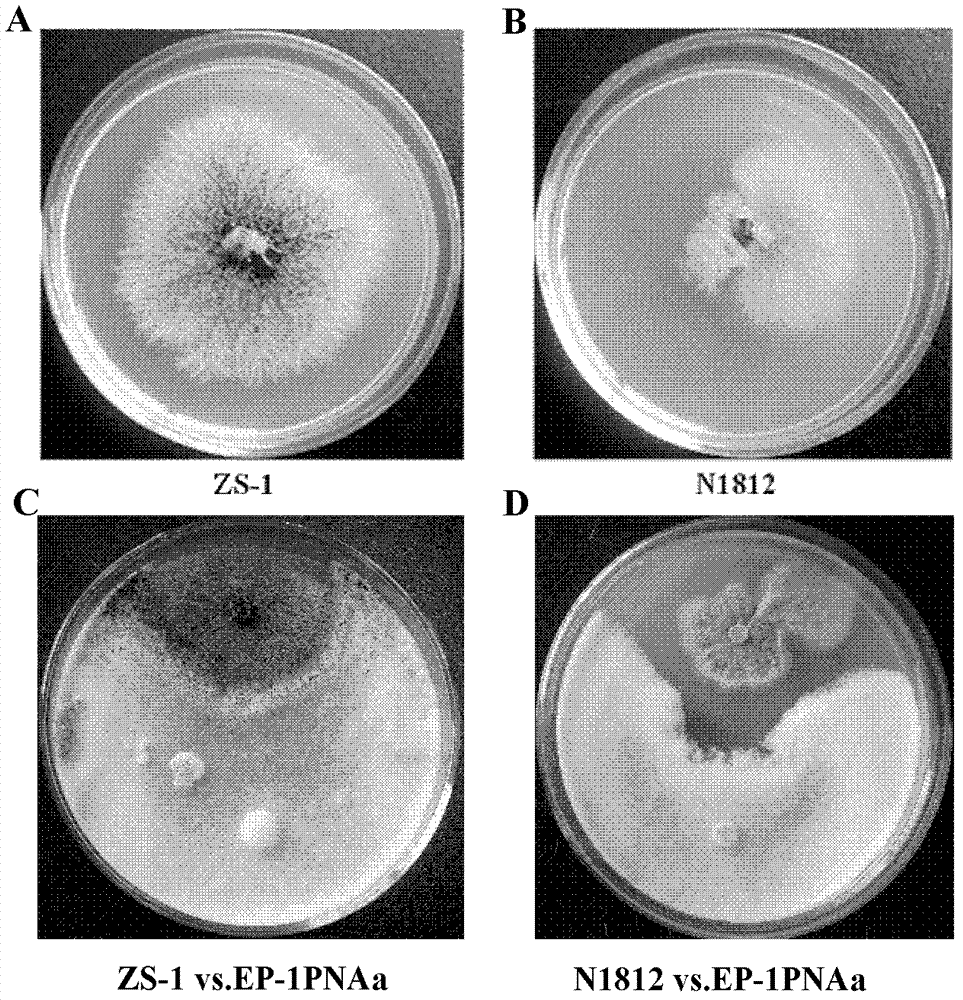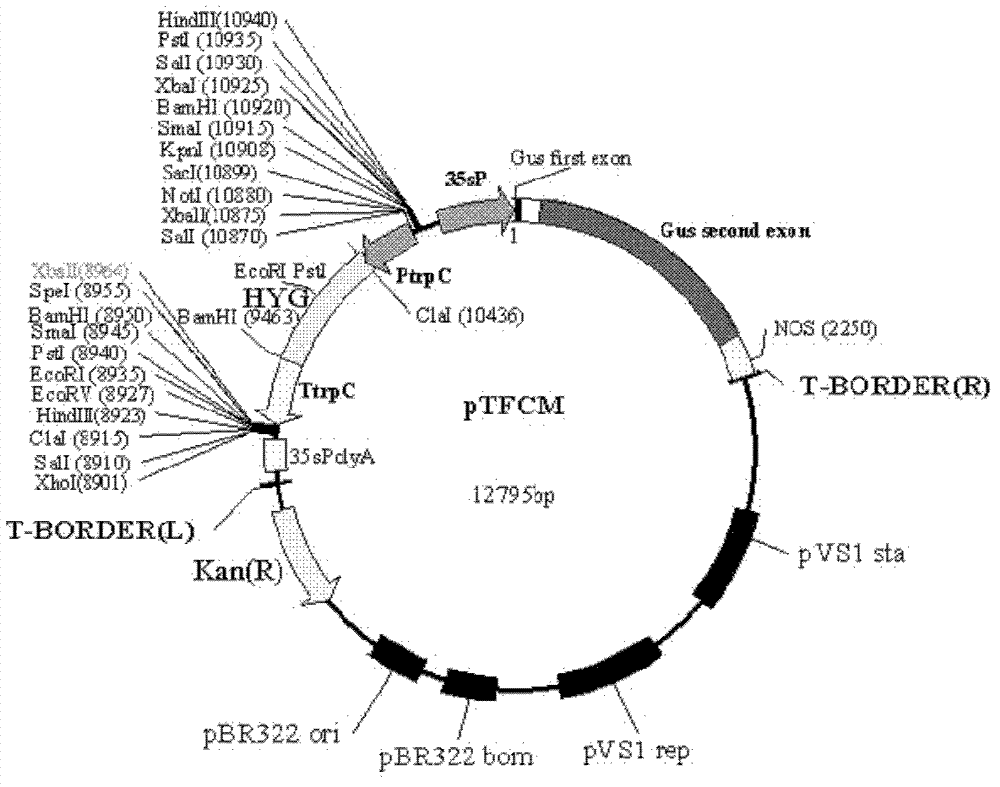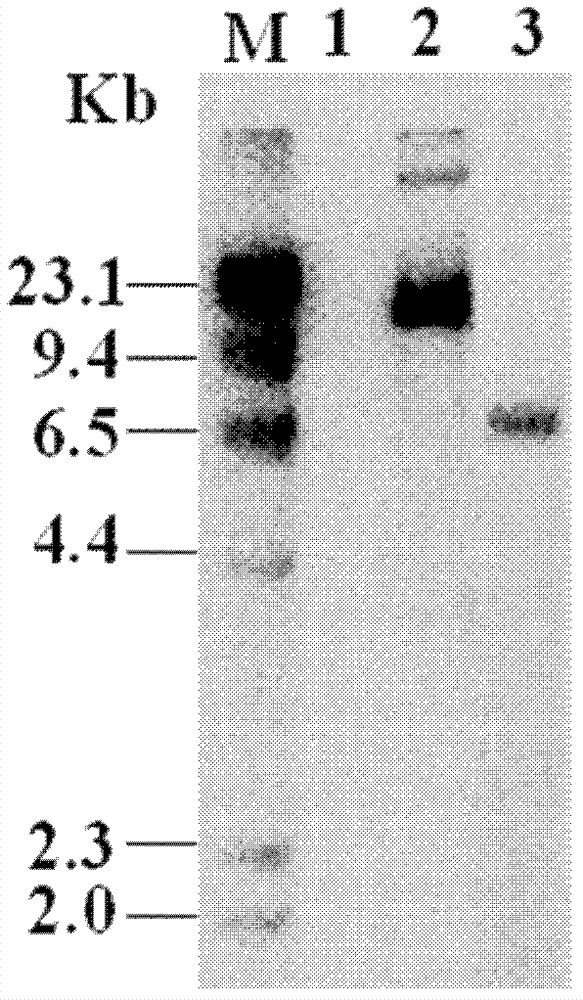Coniothyrium-minitans siderophore transporter (CmSit1) gene as well as preparation method and application thereof
A technology of transport protein and iron shell shell, which is applied in the biological field, can solve the problems such as the unseen CmSit1 gene and antifungal ability research reports, and achieve the goal of improving the ability of resisting plant pathogenic fungi, improving the antifungal ability, and improving the resistance Effect
- Summary
- Abstract
- Description
- Claims
- Application Information
AI Technical Summary
Problems solved by technology
Method used
Image
Examples
Embodiment 1
[0051] A method for preparing the siderophore transporter gene of the shell mold, the steps are:
[0052] A. Screening of the enhanced antifungal ability of C. shield ZS-1N1812:
[0053] According to the mature Agrobacterium tumefaciens (EHA105)-mediated genetic transformation method of C. shieldias established in our laboratory (LiMoxiao, et al. Transformation of Coniothyrium minitans, a parasite of Sclerotias clerotiorum, with Agrobacterium tumefaciens. FEMS Microbiology Letters. -329.), transformed the C. shield ZS-1 strain isolated from the field in our laboratory, and obtained a C. shield insertion mutant library containing more than 45,000 T-DNA markers. Use PDA medium (PDA adopts the conventional production method: 200g peeled potatoes, add appropriate amount of distilled water (500-800ml) to cook, add glucose 20g, agar powder 13g, supplement distilled water to 1000ml) at 20 °C to activate and cultivate shield shells The transformants of mold ZS-1 bacterial strain and ...
Embodiment 2
[0065] Detection of the expression level of CmSit1 in ZS-1N1812
[0066] First connect ZS-1 and ZS-1N1812 mycelium blocks on cellophane, after culturing for 4 days, collect mycelia and add 3ml of sterile water to grind in a mortar, then suck 200μl with a pipette tip and spread it on a flat plate covered with cellophane Above, fresh mycelia were collected for 48h, 72h, 96h and 120h growth respectively. RNA was extracted using Invitrogen’s TRIzol kit, and RT-PCR was performed to detect the expression level of the target gene (primer sequence SIT1-FP: CCACTT CCA ACC CGA CAC; SIT1-RP: CTT ACG CCT CCG ACA AAT), and the ACTIN gene was used as an internal control (Primer sequence ACTIN-FP: ACC GTG AGA AGA TGA CCC; ACTIN-RP: AAG GAC AGA AGG CTG GAA G) For specific steps, please refer to the kit instructions. The test results found that in ZS-1N1812, the expression levels of CmSit1 at the four time points detected were significantly increased, while the expression of CmSit1 could not ...
Embodiment 3
[0068] Inhibitory effect of culture filtrate of ZS-1N1812 activated and expressed by CmSit1 on pathogenicity of Sclerotinia sclerotiorum
[0069] Rapeseed rape (commercial rapeseed varieties are acceptable) for pathogenicity testing is grown in a greenhouse (15-20° C.) for 30 days, and vigorously growing leaves in the middle of each rapeseed plant are taken for the test. The mycelia of C. shield were inoculated on the PDA plate covered with cellophane, and the mycelium was collected after 6 days of culture. The collected mycelium was ground in a mortar with sterile water, added to PDB, placed on a shaker at 20°C, and then shaken for 9 days. Sclerotinia Ep-1PNA367 mycelium blocks were inoculated on the PDA plate, and after 3 days of cultivation, the mycelium blocks at the edge of the colony were picked up and placed in sterile ddH 2 Soak in O, PDB, ZS-1 filtrate, ZS-1N1812 filtrate for 30min, then inoculate in isolated rapeseed leaves or potted rapeseed (5-6 leaf stage), cultur...
PUM
| Property | Measurement | Unit |
|---|---|---|
| Diameter | aaaaa | aaaaa |
Abstract
Description
Claims
Application Information
 Login to View More
Login to View More - R&D
- Intellectual Property
- Life Sciences
- Materials
- Tech Scout
- Unparalleled Data Quality
- Higher Quality Content
- 60% Fewer Hallucinations
Browse by: Latest US Patents, China's latest patents, Technical Efficacy Thesaurus, Application Domain, Technology Topic, Popular Technical Reports.
© 2025 PatSnap. All rights reserved.Legal|Privacy policy|Modern Slavery Act Transparency Statement|Sitemap|About US| Contact US: help@patsnap.com



